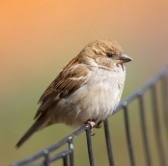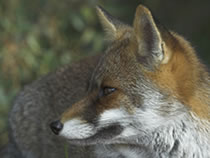How does the Vaccinium oxycoccus
interact with other species?
The Vaccinium oxycoccus has a mutualist relationship with the fungal
species Hymenoscyphus ericae. This fungus is an ascomycete and provides
the benefits of nitrogen to the Vaccinium oxycoccus. It also is thought
that the Hymenoscyphus ericae helps to detoxify the soil around the
roots of the Vaccinium oxycoccus (Jaquemart p. 387)
Some areas were Vaccinium oxycoccus grows there have been seen the
interaction of bumblebees and honeybees with the Vaccinium oxycoccus,
the bees help in the dispersal of pollen between flowers. (Jaquemart p. 390)
Vaccinium oxycoccus more commonly known as the cranberry plant is very
important in the life of humans. The fruit of the Vaccinium oxycoccus
is collected and use for food, medicine, and even fermented to make alcoholic
beverages. (Jaquemart p. 392)
Other then humans other mammals that eat the fruit of the Vaccinium
oxycoccus are bears and foxes (click for fox information
Fox!). Many birds
also eat the fruit and this aids in the dispersal of seeds. These birds include
Erithacus rubecula, Turdus philomelos, Turdus viscivorus,
Turdus merula, Lagopus lagopus, Lagopus mutus,
Tetrao urogallus, and Tetrao tetrix. (Jaquemart p. 392)
The fungi Monilinia oxycocci is known to cause a common pathogen in
Vaccinium oxycoccus known as the cottonball pathogen. It grows in the
anthers, nectaries, petals, and stigmata. However, it will not grow on the
styles. (Sanderson p. 1)


